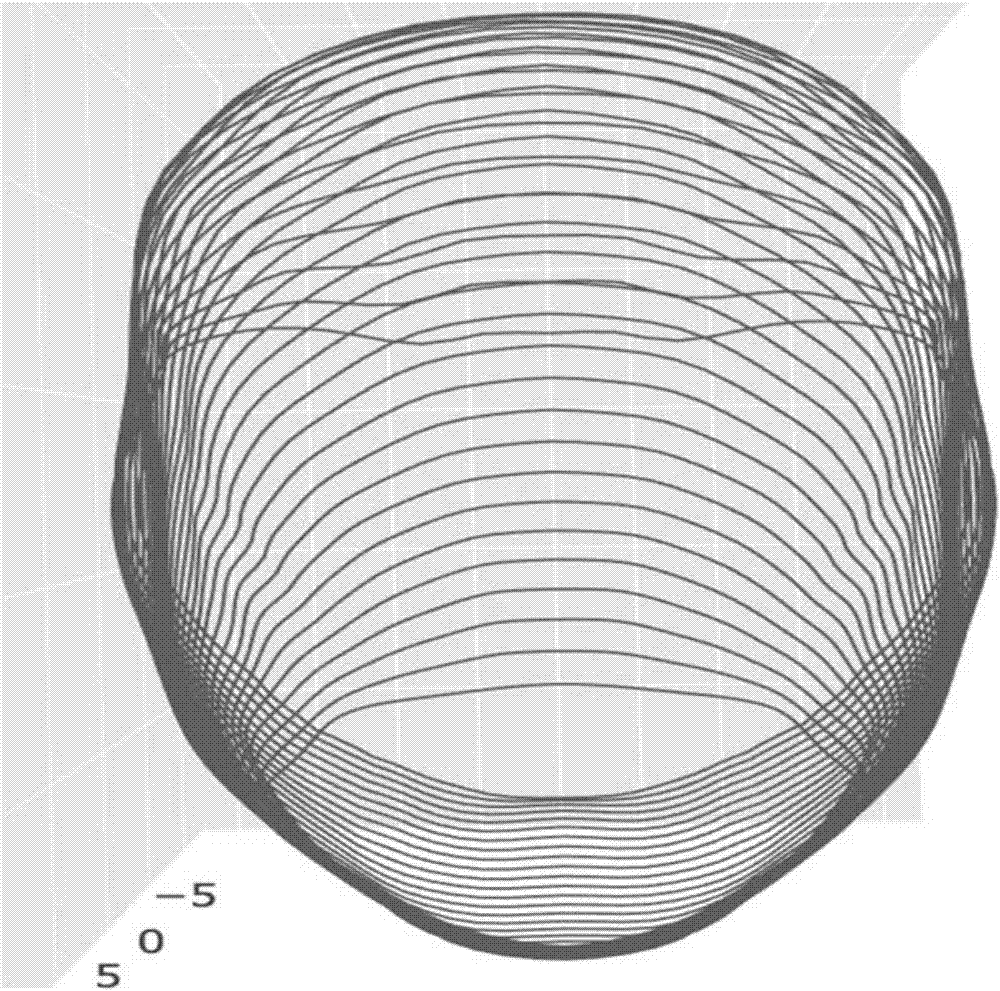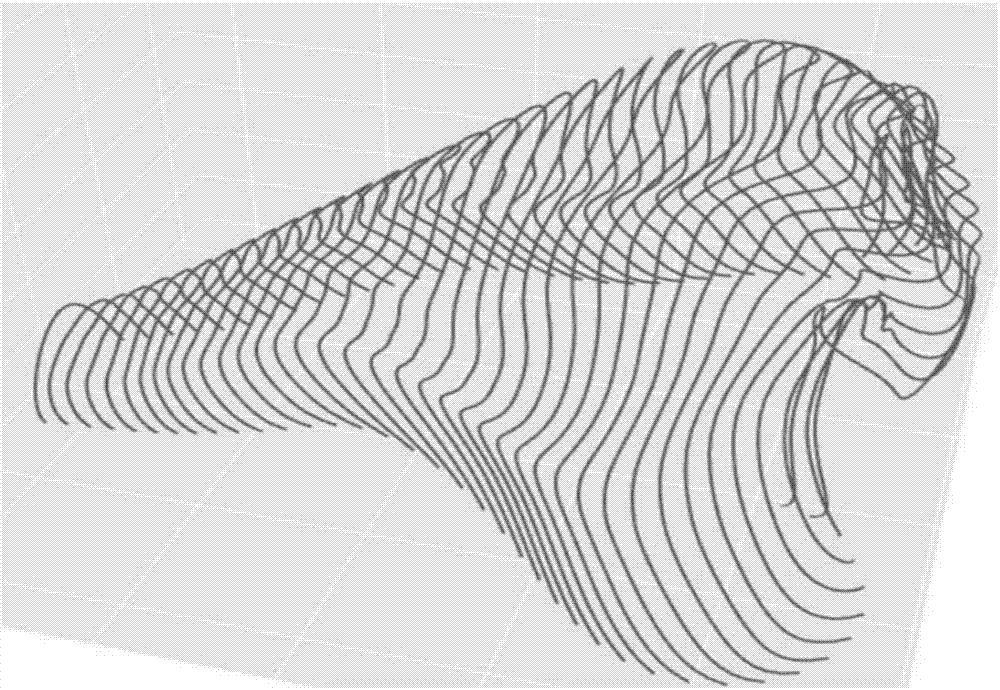Feature-based three-dimensional face modeling method
A technology of 3D face and modeling method, which is applied in the field of feature-based 3D face modeling, can solve the problems that the expected pattern cannot be adjusted, the face model is difficult to polish, and the granularity is high, so as to achieve fast adjustment speed, The effect of accurate feature points and high degree of restoration
- Summary
- Abstract
- Description
- Claims
- Application Information
AI Technical Summary
Problems solved by technology
Method used
Image
Examples
Embodiment Construction
[0036] The technical solutions of the present invention will be further described in detail below in conjunction with specific embodiments.
[0037] see Figure 1-12 , a feature-based 3D face modeling method, the steps are as follows:
[0038] 1) Divide the face into multiple regions. In this embodiment, preferably, the face is divided into region A, region B, region C, region D, region E, region F, region G, region H, region I, region J;
[0039] The area A is formed by selecting the frontal muscle, the galeal aponeurosis, the frontal abdomen of the occipitofrontal muscle, and the superficial layer of the temporal fascia; the area B is formed by selecting the corrugator supercilii, the procerus muscle, and the deep layer of the temporal fascia; the area C is formed by selecting the orbicularis oculi muscle, occipitofrontal muscle frontal abdomen, occipitofrontal muscle occipital abdomen, and inner border; the region D is formed by selecting the nasal muscle, the inner part ...
PUM
 Login to View More
Login to View More Abstract
Description
Claims
Application Information
 Login to View More
Login to View More - R&D
- Intellectual Property
- Life Sciences
- Materials
- Tech Scout
- Unparalleled Data Quality
- Higher Quality Content
- 60% Fewer Hallucinations
Browse by: Latest US Patents, China's latest patents, Technical Efficacy Thesaurus, Application Domain, Technology Topic, Popular Technical Reports.
© 2025 PatSnap. All rights reserved.Legal|Privacy policy|Modern Slavery Act Transparency Statement|Sitemap|About US| Contact US: help@patsnap.com



